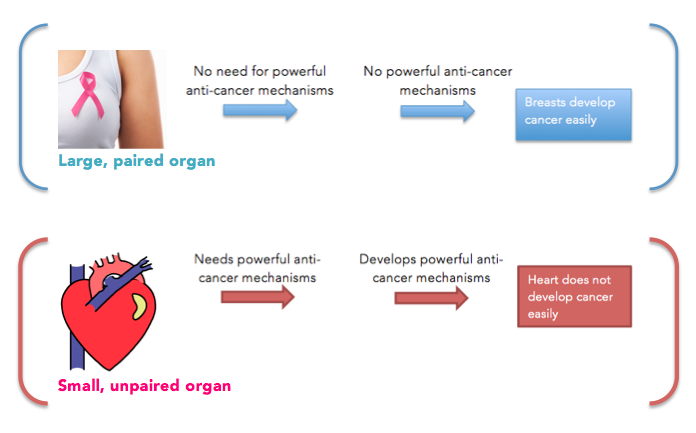
All organs are not created equal, especially when it comes to cancer. Breast cancer is so much more common than heart cancer. Why? Scientists have been wrestling with this question for a long time, trying to find factors—cellular and environmental—that make cancer more likely to occur in an organ. With no clear answers, a group of scientists is calling for a change in approach. In an opinion piece in Cell, they suggest that organs be seen as separate “islands” that evolved individually.
During their evolution, cancer must have hit. When cancer developed in a large, paired organ like the breasts, the cancer-free part could pick up the slack, the breasts continued to do their job, and the organism survived, passing on its traits, including its breasts, to its children.
However, think of an unpaired, small organ necessary for survival, like the heart. When it developed cancer, it didn’t have enough of a cancer-free part to function, and the organism died. Heart cancer caused the organism to die—unless the heart could fight off the cancer. So, the only organisms that survived were those whose small, necessary organs developed powerful anti-cancer defenses. These organisms lived, reproduced, and left behind children with the same organs. We are their descendants. According to this theory, then, our small, crucial organs have powerful anti-cancer defenses, while larger, paired organs, like breasts, do not. As a result, breasts develop cancer more often than hearts do.
